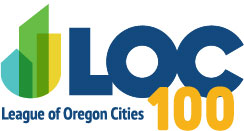LOC News
Legislative Alert on SB 493 – Legislation Likely to Increase Infrastructure Costs
SB 493-A was passed out of the House Rules Committee on Friday, May 7 and is now heading to the House floor for a final vote, which is expected Tuesday, May 18. Do not delay - Cities are asked to reach out to their representatives as soon as possible to express opposition to the bill and to highlight infrastructure needs that communities are already struggling to afford.
LOC is strongly opposed to this legislation and believes that it will increase cost for some public works projects, including critical infrastructure, and that the cost impacts will be most significant for rural Oregon communities. A study from the University of Oregon Labor Education Research Center indicated that if this law were to pass in Oregon, that construction wage rates may increase by $100 million annually. LOC is concerned that this represents a potential increase of $100 million in public works/infrastructure costs annually and may result in a number of projects becoming more unaffordable for communities.
SB 493-A changes the process and data that the state uses to make prevailing wage rate determinations – these are the construction wages that must be paid for the construction of public works projects. The current process/data reflects an averaging of construction wage rates in a region while the new process will instead determine prevailing wage rates by only using the highest wage rate that is contained in any collective bargaining agreement (CBA). The highest wage rate will now become the new minimum/prevailing wage rate. This may have a more significant impact on rural communities as there are a number of statewide CBAs in place. As a result, the rates in the statewide CBA will likely become the new minimum wage rates for all regions and local wage rates will no longer be factored into the calculation. Under SB 493-A, if a statewide CBA exists, the same rates will be paid in both urban and rural communities which is a significant departure from the current process that strives to take local economies into consideration.
As an example, Associated General Contractors has a statewide CBA with carpenters and the statewide rate is $60.05/hour (wage rate + fringe benefit); the current prevailing wage rate for carpenters doing work in Jackson, Josephine, Klamath, Lake, Baker, Union, Wallowa, Harney and Malheur counties is $45.94/hour (wage rate + fringe benefit). This represents a wage rate increase of more than 30% in rural communities. Please note, that this is one example and doesn’t represent what will occur with all wage rates for all occupational trades, but it does demonstrate that this new wage rate determination process is more likely to result in wage spikes that may result in considerable increases for some wage rates.
This week the LOC received a wage rate comparison (compiled by the Legislative Policy Research Office) that shows how SB 493-A would likely impact various occupational wage rates in all of the state’s regions. The document shows the current prevailing wage rate (column d) and what the wage rate may look like if the highest rate in a collective bargaining agreement becomes the new minimum prevailing wage rate (column g).
LOC is concerned that this will only exasperate affordability challenges and the backlog of infrastructure investments that many communities are already experiencing. As cities already know, increased infrastructure costs result in increased costs for housing and for citizens, including through water/sewer rates. And unfortunately for some communities, increased costs mean that some communities may not be able to afford necessary improvements that support public health, promote resilience and economic development, protect the environment, and ensure community livability.
Cities, especially those located in rural parts of the state, are encouraged to contact their legislators to share concerns over potential costs increases for critical infrastructure projects that may result from passage of SB 493-A. Communities may want to consider sharing any lists of capital improvements that are already proving difficult to finance at the local level and to indicate whether the projects are intended to promote public health (e.g. drinking water); protect the environment (e.g. water quality); or to support community growth/livability/resilience.
Contact: Tracy Rutten Rainey, Lobbyist - trutten@orcities.org
Last Updated 5/14/21

